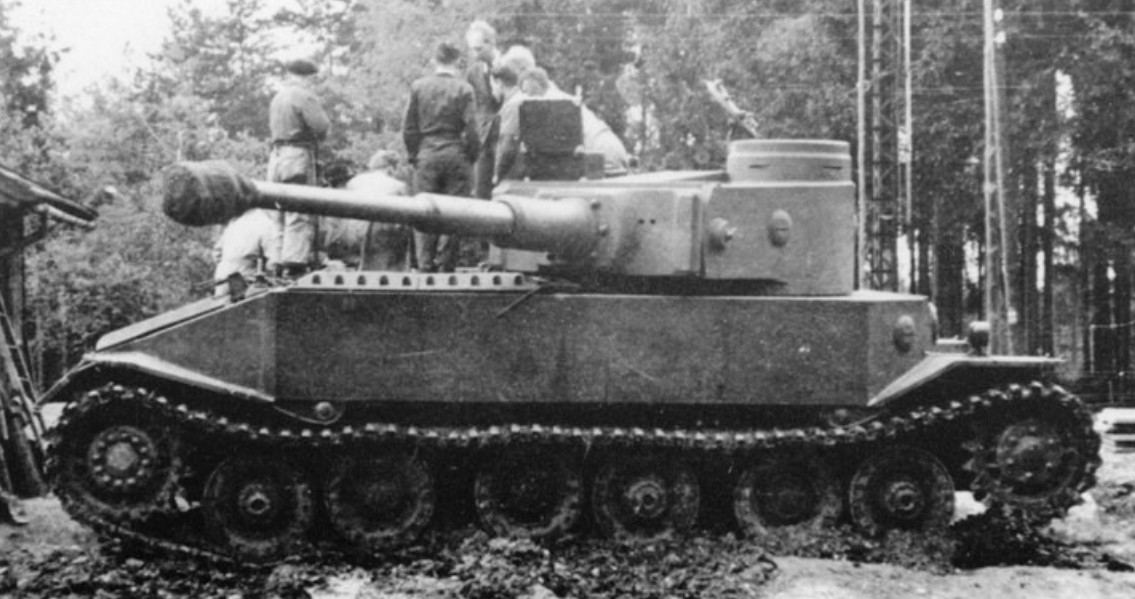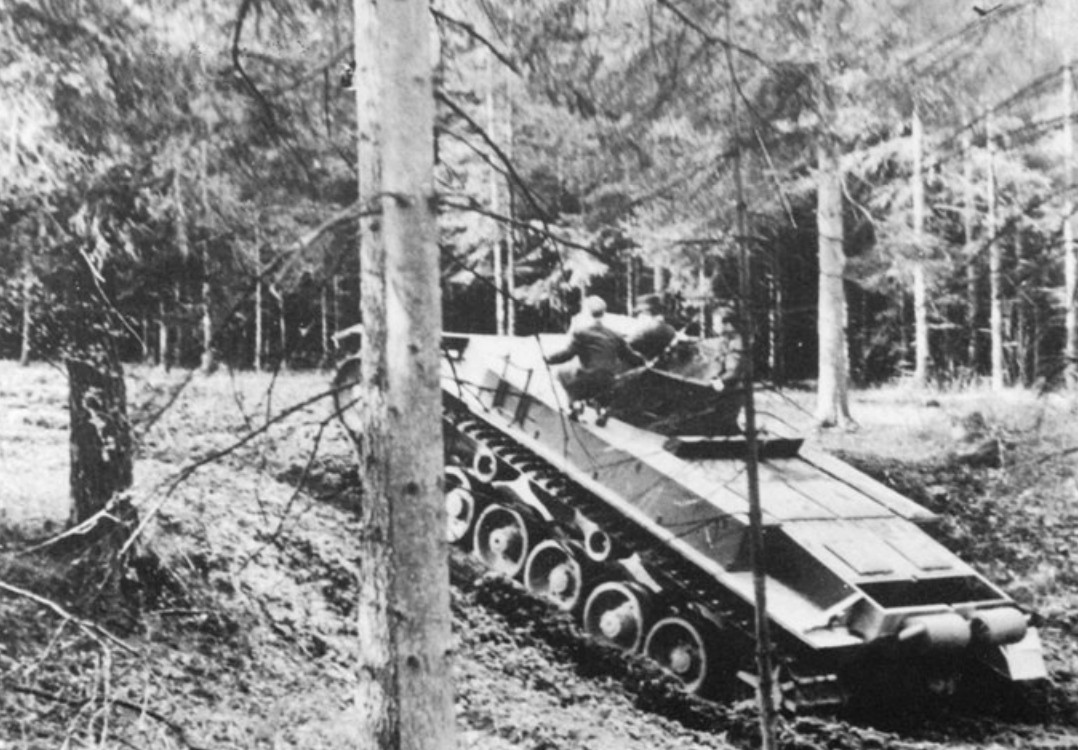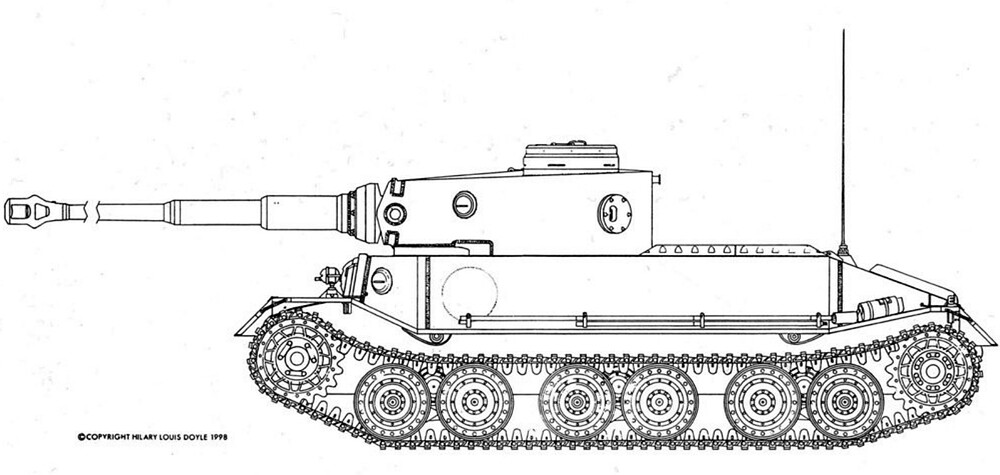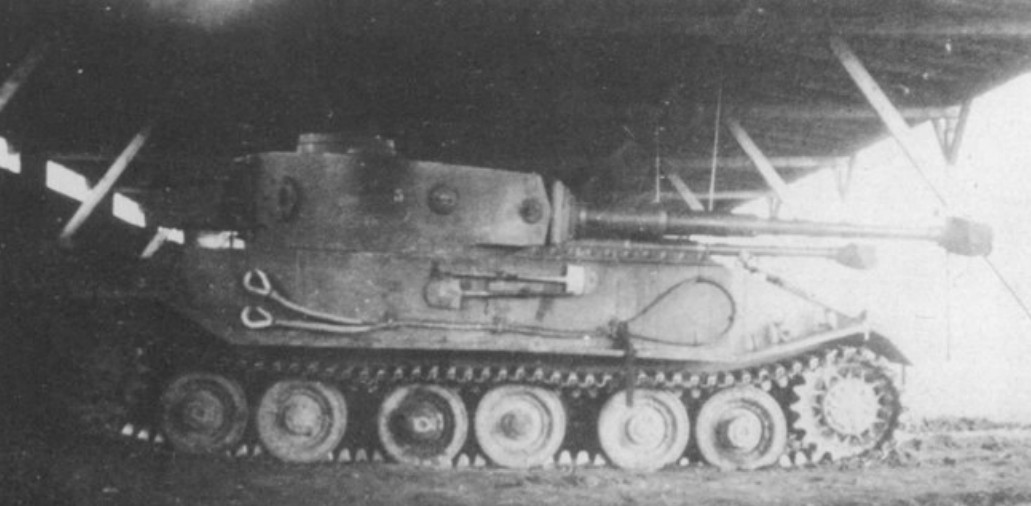- Yes
- No
Hello, and welcome to my suggestion for the early turret variant of the VK 45.01(P).
VK 45.01(P) with the “niedriger Decke”.
TL;DR: Heavy tank prototype, similar to the one that we already have in War Thunder, but with the turret originally designed for the VK 30.01(P). Eight of these turrets were produced and fitted to hulls.
Background:
Spoiler
For most, the basic details of Porsche’s entry into the Tiger competition are fairly well known. Dr. Ferdinand Porsche created a technologically advanced but incredibly temperamental design using an electric transmission - heavy in both flaws and copper consumption, it was discontinued in favor of the Henschel design, but not before Dr. Porsche ordered 100 hulls and corresponding turrets. The 100 turrets ordered, however, were not all identical.
Porsche’s 1940/41 venture, the heavy tank VK 30.01(P), was one of the essential stepping stones leading towards the VK 45.01(P) project. As early as March 1941, Porsche and Krupp representatives had met to discuss armament for the VK 30.01(P). Two different 88mm guns based off of the Flak 36 (what would become the 8.8cm KwK 36 and a paper higher-velocity variant) and a 10.5cm L/47 were all possible, but Porsche eventually decided with the base 8.8cm KwK 36 in a meeting on April 24, 1941. During the same meeting, Krupp sent a letter to Nibelungenwerk detailing costs of production for 3 VK 30.01(P) hulls, 6 turrets of the new design, and one wooden mockup.
The VK 30.01(P) on mobility trials.
The turret design that Krupp had made was fairly unique but recognizable at the same time. With a distinct horseshoe shape that would reappear on the Tiger H1 and E series turret, the right side wall bent slightly steeper towards the gun than the left. The roof was also distinct from successor designs - while other turrets would feature a sloped but otherwise flat turret roof, this original design had a 2-step roof. The portions on either side of the gun were slightly sloped towards the rear of the turret and much lower than on a regular Tiger’s turret. The section over the gun, however, sloped more steeply and then leveled off about halfway down the length of the turret. This gave the gun a greater degree of depression while still keeping the rest of the turret shorter. Later on, when the more common “raised” turret was designed and built (like the one on Tiger H1), these shorter turrets were known as “niedriger Decke” - lit. “lower ceiling” - and had serial numbers 1 through 8.

A “niedriger Decke” turret - note the distinct raised middle portion.
The VK 30.01(P) program did not survive long. In May 1941, Hitler requested several modifications to the design, namely an increase from 80mm to 100mm armor thickness (which required the building of a new hull) - but the gun was almost fully satisfactory. Due to this stroke of luck, Porsche decided it was not worthwhile to design a new turret, and had Krupp simply increase the armor thicknesses (80mm front to 100mm front, 60mm sides to 80mm sides, etc.) and mount it on the new design. Because of this, when the VK 45.01(P) was officially ordered on the 22nd of June 1941, the first 8 turrets were built according to the modified VK 30.01(P) specifications.
While Krupp wished to convert these first 8 turrets to a new and improved “raised” design (what can be seen on the Tiger H1), there was simply not enough time given the rush of trials. On the 1st of September 1942, Nibelungenwerk informed Krupp that they would be sending four of the VK 45.01(P)s to Döllersheim, serving as troop training vehicles under the command of schwere Panzerabteilung 503. Nibelungenwerk also informed Krupp that these vehicles would be provided with the turrets 1-8. In fact, out of the 10 completed VK 45.01(P)s, only 2 would have the newer, raised roof turrets - famous as the turret for the Tiger H1.
The end of the VK 45.01(P) was an unceremonious one. Following the victory of the VK 45.01(H1) in trials for the Tiger tank program, 90 of the already built Porsche hulls were converted to the Ferdinand/Elefant Panzerjaeger. The rest of the hulls (including those with the niedriger Decke turret, turrets 1 through 8) were collected at Wa Pruef 6 and served their lives as test vehicles or targets - save for one Panzerbefehlswagen (command tank), created from hull Nr. 150013 and turret Nr. 14.
Construction:
- Builder: Neibelungenwerk
- Ordered: 22nd July 1941
- Completed: May 1942
- Length: 9.54m
- Width: ~3.40m
- Height: 2.90m
- Weight: 52.5 tons
- Powerplant: Twin Typ 101 V10 gasoline engine, 310hp each @ 2000rpm
- Speed: 35km/h
Armor:
- Hull: 100mm front, 80mm sides, 80mm rear, 25mm roof
- Turret: 100mm face, 80mm sides, 80mm rear, 25mm roof
Armament:
- 88mm KwK 36, 80 rounds carried (identical to 88mm KwK 36 ammunition in-game)
- 2 x 7.92mm MG34 machine gun (bow, coax).
Images
All of the following images are from Panzerkampfwagen VI P (Sd.Kfz.181) by Thomas Jentz and Hilary Doyle.
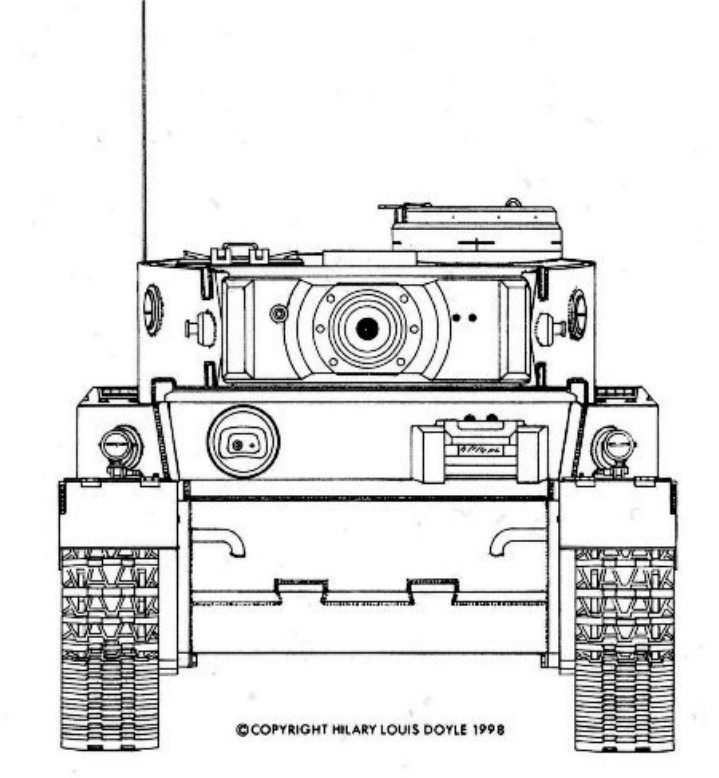
Illustrations of VK 45.01(P) Number 1.
A “niedriger Decke” turret - note the asymmetrical shape.
One of the Turm 1-8 VKs issued for troop training at Döllersheim
Addendum: As per usual with prototypes, there were a couple differences between each of the Turm 1-8 VK 45.01(P)s. The most obvious are a turret basket on most of the VKs (mounted approximately 40mm lower on the niedriger Decke turrets than on the standard turret VKs) and smaller track guards on half of the hulls. These are, in my opinion, way too minor to be worth the extra work of defining and so this suggestion is purely for the Turm 1-8 on whichever VK 45.01(P) hull the devs see fit.
Yours Truly, KewlPangolin.
Sources:
Panzerkampfwagen VI P (Sd.Kfz.181) by Thomas Jentz and Hilary Doyle, 1997
Germany’s Tiger Tanks by Thomas Jentz and Hilary Doyle, 2000
Tank Archives - Porsche’s Leopard
Tank Archives - Porsche’s Tiger: A Victim of Dirty Competition
.
.
.
EDITS! Changed the name and rephrased background to be more in-line with War Thunder’s conventions since the renaming of Tiger II P to Tiger II (Nr. 1-50). Enjoy!
